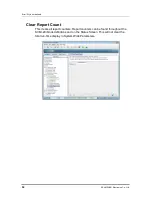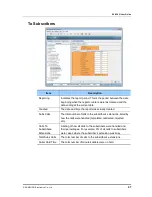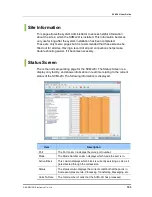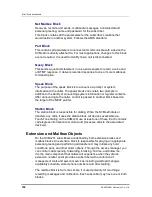
SVMi-20i User Guide
© SAMSUNG Electronics Co., Ltd.
105
Explanation of Default Configuration
Application Design
Creating an application consists of linking appropriate blocks into a set of
call control paths which, for a particular caller or group of callers, represents
a call routing solution. The number of control paths needed to establish a
proper routing solution depends upon how many alternatives or variations
the organization wishes to provide to satisfy anticipated needs of a caller(s).
The default application is built using blocks. Each block has a specific
purpose and they are chained together to build an application.
This allows a caller to pass from one to the other as the call is processed.
The default configuration in the SVMi-20i has been designed to simplify
installation and reduce the amount of time it takes to learn the application.
Many of the configuration options have been disabled or fixed at a default
value. When a call is answered, it is processed by a number of blocks
behind the scenes. These blocks are hidden for the sake of simplicity.
The call is processed in the following way:
NEW CO (Central Office) CALLS
New calls are answered by the PORT block which consult the SCHEDULE
Table to see which MODE block should take control of the call session.
The MODE block will then pass control to one of the MENU blocks, based
on call type. This may have sounded complicated but is quite simple.
By default, all of the configurations are done for you. Most of the applications
for a customer actually starts at the MENU block. Knowledge of how the call
is routed through the system will help you create more complex applications
only when and/or if necessary.
Depending on the current mode (Day, Night, Holiday, or Weather), a custom
company greeting is played and a caller is directed to any other block in the
system based on the DTMF input.
The below call routing solution chart displays the communication links and
connections between each of the blocks in the system.
FORWARDED CALLS
Forwarded calls follow the same initial call flow as stated above.
Their call type is identified as a forwarded call and the call is passed to a
MENU block that handles forwarded calls. This MENU block does not speak
to the caller but simply looks at the Forward ID of the call and transfers the
caller to an appropriate subscriber’s personal greeting. Based on the
subscriber’s greeting, the caller may leave a message, route himself or
herself to another subscriber, return to the main menu, or simply hang up.
Summary of Contents for SVMi-20i
Page 1: ...Ver 2600 00DMMRGAN 3 0 SVMi 20i User Guide ...
Page 6: ...Error Style not defined 6 SAMSUNG Electronics Co Ltd This page is intentionally left blank ...
Page 10: ...TABLE OF CONTENTS 10 SAMSUNG Electronics Co Ltd This page is intentionally left blank ...
Page 68: ...Error Style not defined 68 SAMSUNG Electronics Co Ltd This page is intentionally left blank ...
Page 244: ...Error Style not defined 244 SAMSUNG Electronics Co Ltd This page is intentionally left blank ...
















































